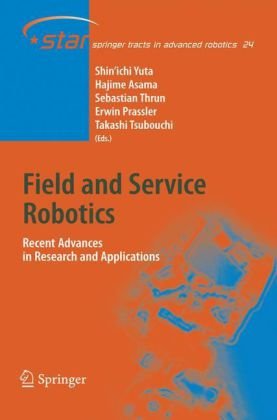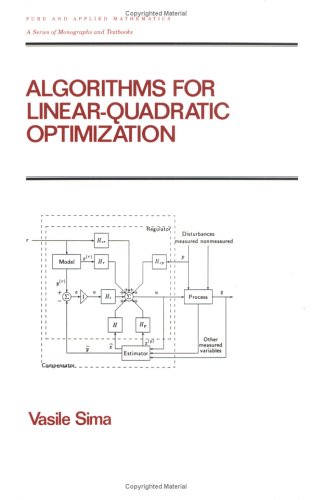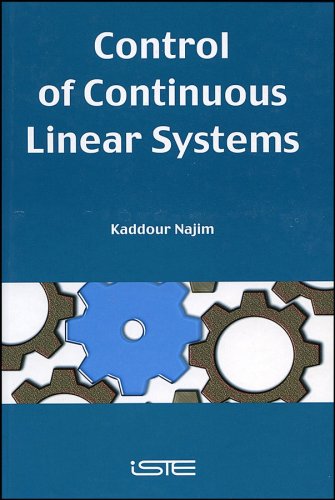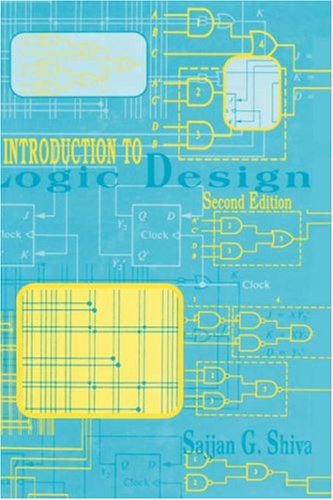Shin’ichi Yuta, Hajime Asama, Sebastian Thrun, Erwin Prassler, Takashi Tsubouchi9783540328018, 3-540-32801-7
Table of contents :
front-matter.pdf……Page 1
1 Introduction……Page 16
2 New Research Model and Field and Service Robotics……Page 17
3 Robotics and RT Systems……Page 18
4 From Robotics to RT Systems……Page 19
5 From RT Systems to Robotics……Page 21
6 Conclusions……Page 23
References……Page 24
1 Introduction……Page 26
2 Basic Configuration of SDR-4X……Page 27
3 Key Devices……Page 28
4.3 External Force Adaptive Motion Control……Page 29
4.4 Real-time Adaptive Falling over Motion Control……Page 30
5 SDR Motion Creator……Page 31
6.2 A Cappella Chorus Performance……Page 32
References……Page 33
1 Introduction……Page 34
2.1 Locomotion in Real World Environment……Page 35
2.2 Environment Representation……Page 36
2.3 Navigation and Control Architecture……Page 37
3.1 Wheel-Based Mobile Robot Locomotion for Rough Terrain……Page 38
3.2 RoboX, the Tour-Guide Robot with Long-TermExperience [11]……Page 40
References……Page 42
1 Introduction: Trends in Human Technology Interaction……Page 44
3 Lead Projects on Human Technology Interaction……Page 45
3.1 Selected Demonstrators……Page 48
4 Results of the Lead Projects on Human Technology Interaction……Page 50
1 Introduction……Page 52
2.2 Local Information for Actual Navigation……Page 53
3.1 Information Assistant and Optical Pointer……Page 54
3.2 Navigation Algorithm of the System……Page 55
4.1 Omni-Directional Mobile Robot……Page 56
4.2 Information Assistant and Optical Pointer……Page 57
5 Experiments……Page 58
6 Conclusion……Page 59
References……Page 60
1 Introduction……Page 61
2.1 Desired Vehicle Path……Page 62
2.2 Snakes, Rails and Bands……Page 63
2.4 Turning……Page 65
3 Results……Page 67
4 Discussion……Page 68
5 Summary……Page 69
References……Page 70
1 Introduction……Page 71
2.1 Kinematics……Page 72
2.2 Control Law Development……Page 73
2.3 Ant Navigation……Page 75
3 Experiments……Page 76
3.3 Results and Discussion……Page 77
4 Obstacle Avoidance……Page 78
5 Conclusion……Page 79
References……Page 80
1.1 Related Work……Page 81
2 Velocity Obstacle Approach……Page 82
3.1 Representing Uncertainty……Page 83
4 Recursive Probabilistic VO……Page 84
4.2 Navigation with Recursive PVO……Page 85
5.1 Complexity……Page 86
5.2 Experiments……Page 87
6 Discussion……Page 88
References……Page 89
1 Introduction and Related Work……Page 90
2 Vehicle Platform and Terrain Mapping……Page 91
3 Rough Terrain Navigation……Page 92
4 Learning Vehicle Predictions……Page 93
4.1 Feature Extraction……Page 94
4.2 Learning……Page 95
5.1 Performance Improvement……Page 96
5.2 Adapting to Environmental Change……Page 97
6 Conclusions and Future Work……Page 98
References……Page 99
2 Underwater Positioning……Page 100
3 Bathymetric Terrain Maps……Page 101
4 Results……Page 103
4.1 Sydney Harbour Demonstration……Page 106
5 Conclusions……Page 107
References……Page 108
1 Introduction……Page 110
2.2 Sensors……Page 111
3.3 State of the Art……Page 112
3.4 Methods Implemented……Page 113
4.1 Terrain Registration Method……Page 114
5 Path Planning……Page 115
5.1 Traversability Maps……Page 116
5.3 Example with the APHill Data Set……Page 117
References……Page 118
2 Traversability Test……Page 120
2.1 Sensing Front……Page 121
2.2 Making Elevation Map……Page 122
2.3 Test of Traversability……Page 123
3.1 Mobile Robot Platform “Yamabico-Navi”……Page 124
3.2 Sensing Front……Page 125
3.3 Making Elevation Map……Page 126
4 Experimental Results and Discussion……Page 127
5 Conclusion……Page 128
References……Page 129
1 Introduction……Page 130
2.1 DGPS……Page 132
2.2 Odometry……Page 133
3 Elimination of Unreliable DGPS Data and Fusion……Page 135
4.1 Evaluation of Proposed Correction Method……Page 136
4.2 Autonomous Outdoor Navigation……Page 137
5 Conclusion and Feature Work……Page 138
References……Page 139
1 Introduction……Page 140
2 Problem Setup……Page 141
2.1 Data Analysis and Preprocessing……Page 143
3 Data Fusion……Page 144
4 Experiments……Page 146
5 Conclusion……Page 148
References……Page 149
1 Introduction……Page 150
2 On Monte-Carlo Localization……Page 151
4 Properties of Wi-Fi Signal Strength……Page 152
5 Mapping Wi-Fi Signal Strength……Page 154
6 Localization……Page 155
7 Conclusion……Page 157
References……Page 158
1 Introduction……Page 159
2.1 Objective of Robust Medial Axis……Page 161
2.2 Generation of Robust Medial Axis……Page 162
2.3 Generation of Tripods……Page 163
2.4 Map Representation……Page 164
3.1 Generation of Con.guration Hypotheses……Page 165
4 Results……Page 166
5 Conclusion and Outlook……Page 167
References……Page 168
1 Introduction……Page 169
2 Related Work……Page 170
3.2 Task Tree Auctions……Page 171
4 Experiments……Page 174
5 Results……Page 175
6 Conclusions……Page 177
References……Page 178
1 Introduction……Page 180
2.1 The Information Filter……Page 181
2.3 Channel Manager……Page 182
3 Constant Time Communication……Page 183
3.1 Extracting the Submap to Communicate……Page 184
3.2 Channel Update……Page 185
3.3 Fusing Information from Other Nodes at the Local Filter……Page 186
4 Results……Page 187
References……Page 188
1 Introduction……Page 190
2 Related Methods……Page 191
3.1 Mechanical System……Page 192
3.3 Software System……Page 193
4 Case Study Review……Page 194
4.2 Data Analysis……Page 195
5 Summary and Conclusions……Page 197
References……Page 198
1 Introduction……Page 200
3 Multiple Target Tracking……Page 201
4.1 Bayesian Program……Page 202
4.2 Experimental Results……Page 204
5.2 Control of the Cycab……Page 207
References……Page 209
1 Introduction……Page 210
2.1 Prediction……Page 211
3 The Searching Problem……Page 212
3.1 Optimal Trajectory……Page 213
4 Application……Page 214
4.1 Problem Description……Page 215
4.2 Motion Prediction……Page 216
4.3 Observation Model……Page 217
4.4 Results……Page 219
5 Summary and Future Work……Page 221
References……Page 223
1 Introduction……Page 224
2.1 Slip Ratio……Page 225
2.2 Tire-Soil Interaction Mechanics……Page 226
2.4 Static and Kinetic Sinkage……Page 227
3 Experimental Identi.cation of Tire-Soil Parameters……Page 228
4 Rover Test Bed……Page 229
6 Maximum Slope Climbing Capability……Page 230
References……Page 232
1 Introduction……Page 234
2.3 Kinematics of WLM……Page 235
2.4 Dynamics of WLM……Page 237
3.1 Number of Wheels……Page 239
3.2 Climbing Strategies……Page 240
3.3 Motorisation……Page 241
4 Conclusion and Outlook……Page 242
References……Page 243
1 Introduction……Page 244
2.1 Mechanical Design……Page 245
2.2 Kinematics……Page 246
3.1 Proposed method……Page 247
3.3 Method of Sensing the Step……Page 249
4 Experiment……Page 250
4.2 Passing Over the Step……Page 251
References……Page 253
1 Introduction……Page 254
2.1 Con.guration of Limb Mechanism Robot……Page 255
2.2 Overview of Control System……Page 256
3.1 Simpli.ed Trajectory Generation……Page 257
3.2 Simpli.ed Gait Pattern by Phase Shift……Page 258
4 Sensor-Based Waling on Rough Terrain……Page 259
5 Adjustment of Footholds of Supporting Limbs……Page 260
6 Conclusions……Page 262
References……Page 263
1 Introduction……Page 264
3 Platform Description……Page 265
4 Learning Control Structur……Page 266
5.1 Heading Control……Page 267
5.3 Pitch Control……Page 268
5.4 Height Control……Page 269
5.5 Lateral Velocity Control……Page 271
References……Page 272
1 Introduction……Page 274
2 Related Work……Page 275
4 Target Detection Using Vision……Page 276
5 Target Tracking Using a Kalman Filter……Page 278
6 Trajectory Planning……Page 279
8 Experimental Results……Page 280
9.1 Limitations, Discussion and Future Work……Page 282
References……Page 283
1 Introduction……Page 284
2.1 Vehicle Model……Page 286
2.2 Range Sensor Model……Page 287
2.3 Optimization……Page 288
3 Results……Page 289
4 Conclusion……Page 292
References……Page 293
1 Introduction……Page 295
2 Aircraft Systems……Page 297
3 Low-Cost Sensors……Page 298
5 Guidance and Flight Control Loop……Page 300
6 Real-Time Results……Page 302
7 Conclusions……Page 304
References……Page 305
1 Introduction……Page 306
2 The UAV……Page 307
3 MMW Radar Payload……Page 308
4 MMW Radar Principles and Design Parameters……Page 309
5 MMW Radar Hardware……Page 310
6 Coordinate Transforms……Page 313
8 Conclusion and Future Work……Page 314
References……Page 315
1 Introduction……Page 316
2 Kinematic Analysis……Page 317
3 Force Analyses……Page 319
4 Simulation Results……Page 321
References……Page 323
1 Introduction……Page 325
2 Basic Leader-Follower Algorithm……Page 326
3 Function Allocation……Page 327
4.2 Control of Follower……Page 329
5 Experiments……Page 332
6 Conclusion……Page 334
1.1 Related Work……Page 335
1.2 Approach……Page 336
2.2 Measurements……Page 337
3 Assessment of Stability Regime……Page 339
3.2 Formulation of the Stability Measur……Page 340
4 Results……Page 342
5 Conclusions……Page 344
References……Page 346
1 Introduction……Page 347
2 Passive Double-Track Mechanism……Page 349
3 Manipulator Design……Page 350
4 Haptic Device for ROBHAZ-DT2……Page 352
5 Integration of ROBHAZ-DT2 System……Page 353
6 EOD Experiment……Page 354
7 Concluding Remarks……Page 355
References……Page 356
1 Introduction……Page 357
2 Driver Assistance Systems……Page 358
4 Software Overview……Page 359
5 A Robust Lane Tracker……Page 360
6 A Force-Feedback System……Page 363
7 Conclusion and Future Work……Page 365
References……Page 366
1 Introduction……Page 367
2 Control Architecture of the Robot……Page 368
2.1 Illustrative Examples on Interactive Tasks……Page 369
3 Learning and Performing Skilled Tasks……Page 370
4 A Case Study……Page 372
4.2 Measuring the Position of a Drill Hole……Page 373
References……Page 374
1 Introduction……Page 375
1.1 Neural Interface……Page 376
1.2 Approach from Cell Engineering……Page 377
2 Mechanisms……Page 378
2.1 Design Concepts……Page 379
2.2 Speci.cations……Page 382
3 Conclusion……Page 383
References……Page 384
1.1 PeLoTe Scenario……Page 385
2.1 Personal Navigation (PeNa)……Page 386
2.1.1 Human dead-reckoning……Page 387
2.1.3 Human localisation and mapping……Page 389
3.1 Navigation and Map Building/Correction……Page 391
4 Common Presence……Page 392
5 Conclusions and Discussion……Page 393
References……Page 394
1 Introduction……Page 395
2 Kinematics Design……Page 398
3 Structural and Actuators Optimization……Page 399
4 Control Architecture……Page 401
5 Conclusions……Page 403
References……Page 404
1 Introduction……Page 405
2 Finding People……Page 406
3 Dimensionality Reduction……Page 407
4 Planning……Page 410
5 Performance……Page 411
6 Related Work……Page 412
7 Conclusion……Page 413
References……Page 414
1 Introduction……Page 415
2.1 Registration of Object Models……Page 416
2.2 Object Recognition……Page 417
3.1 Overview of the Speech Recognition……Page 418
3.2 Estimating the Meaning of Unidenti.ed Words……Page 419
4 Easy Teaching of Mobile Manipulation……Page 420
4.2 Tolerance……Page 421
4.3 Generating Feasible Trajectories……Page 422
6 Summary……Page 423
References……Page 424
1 Introduction……Page 425
3 Control and Softwar……Page 427
3.2 Control of the Robot Manipulator……Page 428
4 Improvement in the Accuracy of the Book Pick-Up Process……Page 429
5 Experiment and Results of the New Improving Pick-Up Process……Page 432
6 Conclusion……Page 433
Reference……Page 434
1 Introduction……Page 435
2 The Set-Up of the Contest……Page 436
2.1 Overall Structure of the Contest……Page 437
2.3 Pollution of the Contest Area……Page 438
2.5 Rules……Page 439
2.8 Handicaps……Page 440
3.1 The Teams and the Robots……Page 441
3.2 The Results……Page 442
4 Insights and Conclusions……Page 444
1 Introduction……Page 445
2 The Automation System……Page 446
3 The Production Trial……Page 448
3.2 Analysis……Page 449
3.3 Hoist Limiting……Page 450
3.4 Uniform Digging Analysis……Page 452
4 Conclusions……Page 453
References……Page 454
1 Introduction……Page 455
2 The Longwall Mining Process……Page 456
3 Automated Face Alignment……Page 457
3.1 Stabalised Inertial Navigation System……Page 459
4 Equipment Interconnection Standard……Page 461
References……Page 462
1 Introduction……Page 463
2.2 Software Architecture……Page 465
2.3 Software Framework……Page 466
4.1 The Need for Drill Monitoring……Page 467
4.2 Neural Network Classi.er……Page 468
5.2 Operator Interface……Page 470
6 Summary……Page 471
References……Page 472
2 Chassis and Electronics……Page 473
3.1 Con.guration……Page 475
3.4 Results……Page 476
4.3 The Experiment……Page 477
5.1 Con.guration……Page 478
5.3 The Experiment……Page 479
7 Future Work……Page 480
References……Page 481
1 Introduction……Page 482
3 Data Collection……Page 483
4.1 Automatic Modeling Method……Page 484
4.2 Discussion……Page 486
5 Laser Sensing in Mine Environments……Page 488
6 Summary and Future Work……Page 490
References……Page 491
2 Conventional Survivor Search……Page 492
3.1 Principle of DETube……Page 493
4 Development of Slime Scope……Page 494
4.1 Air Compressor……Page 495
4.4 Hermetic Wheel Case……Page 496
5 Test Machine……Page 498
6.1 The Holding Power of the DETube……Page 499
6.2 Bending of the DETube……Page 500
References……Page 501
1 Introduction……Page 502
1.2 Local Search System with UMRS……Page 503
2.1 The Feature and Mechanism……Page 504
2.2 Sensing, Processing, and Control……Page 505
3.1 System Con.guration……Page 507
3.2 Outline of Operation……Page 508
3.3 3-Dimentional Search Map with Landmarks……Page 509
4.2 Application of Simulator……Page 510
References……Page 511
1 Motivation……Page 512
2 Localization……Page 513
3 Information Flow……Page 515
3.1 Directional Guidance……Page 516
4 Control of a Network of Robots……Page 518
6 Discussion……Page 519
References……Page 521
1 Introduction……Page 522
2.1 Manipulator……Page 523
2.2 End-Effector……Page 524
2.4 Traveling Devic……Page 525
3.1 Spray Uniformity……Page 526
3.2 Obstacle Avoidanc……Page 528
4.1 Spray Uniformity……Page 529
4.2 Obstacle Avoidanc……Page 530
5 Conclusion……Page 531
1 Introduction……Page 532
3 Covering Path Planning……Page 533
3.1 Case of Convex Polygonal Fields……Page 535
3.2 Case of Convex Polygonal Fields with Obstacle……Page 537
3.3 Case of Nonconvex Polygonal Fields……Page 539
3.4 Case of Fields Including One Moderate Curved Boundary……Page 540
References……Page 541
back-matter.pdf……Page 542







Reviews
There are no reviews yet.